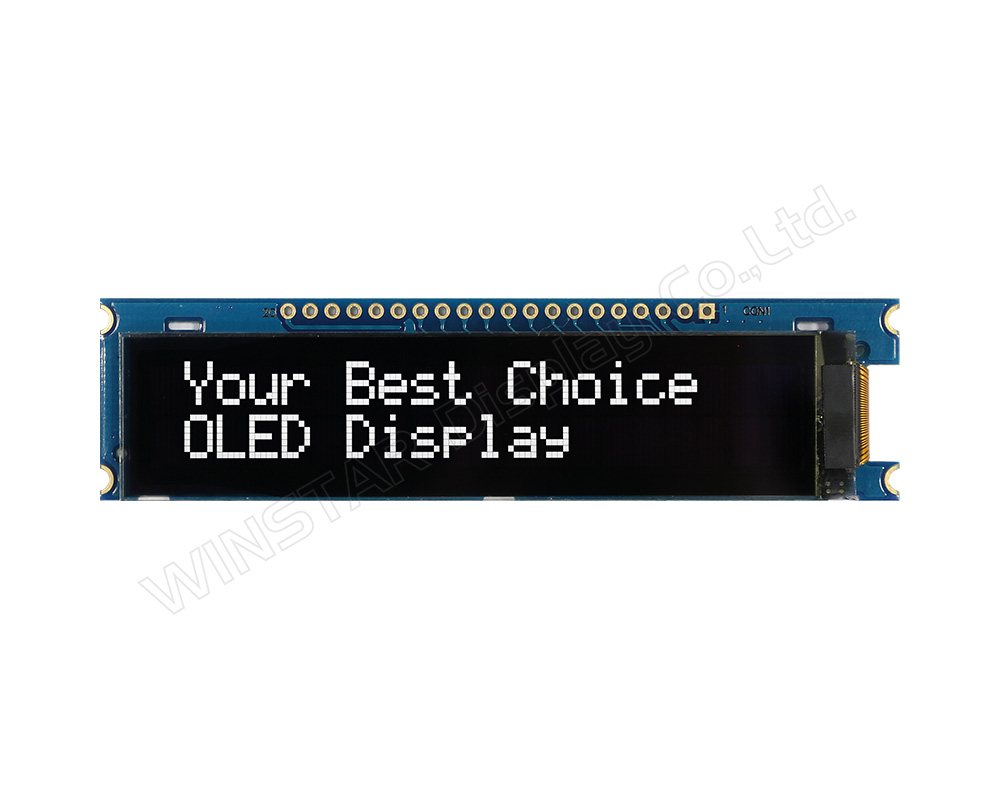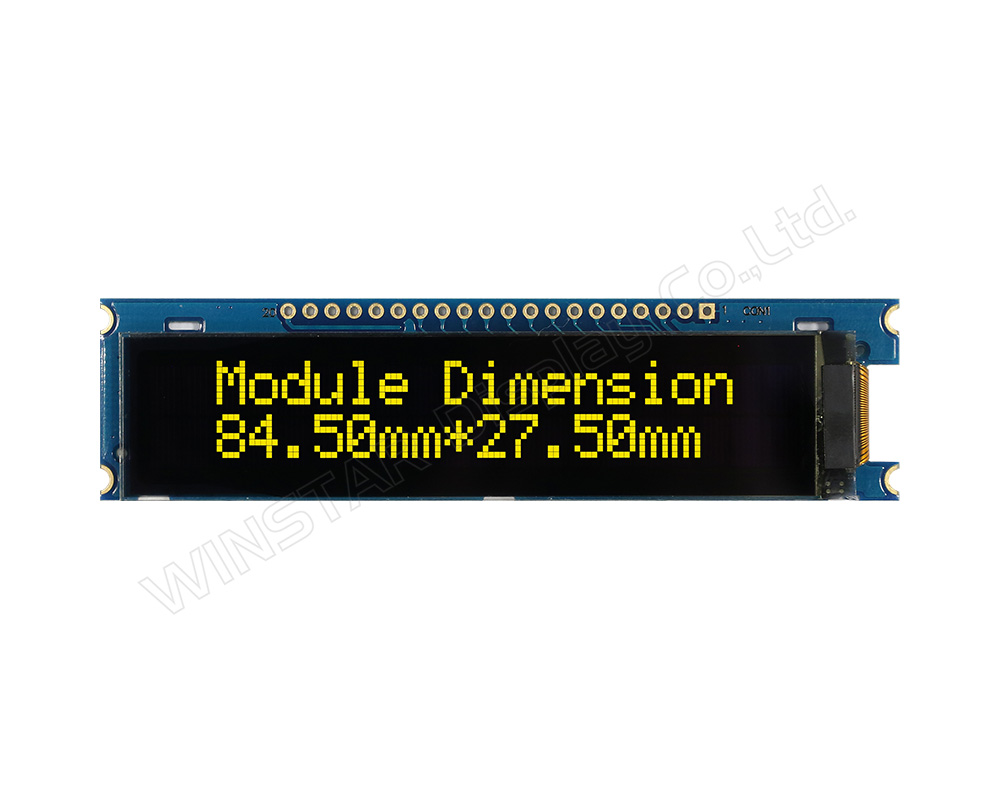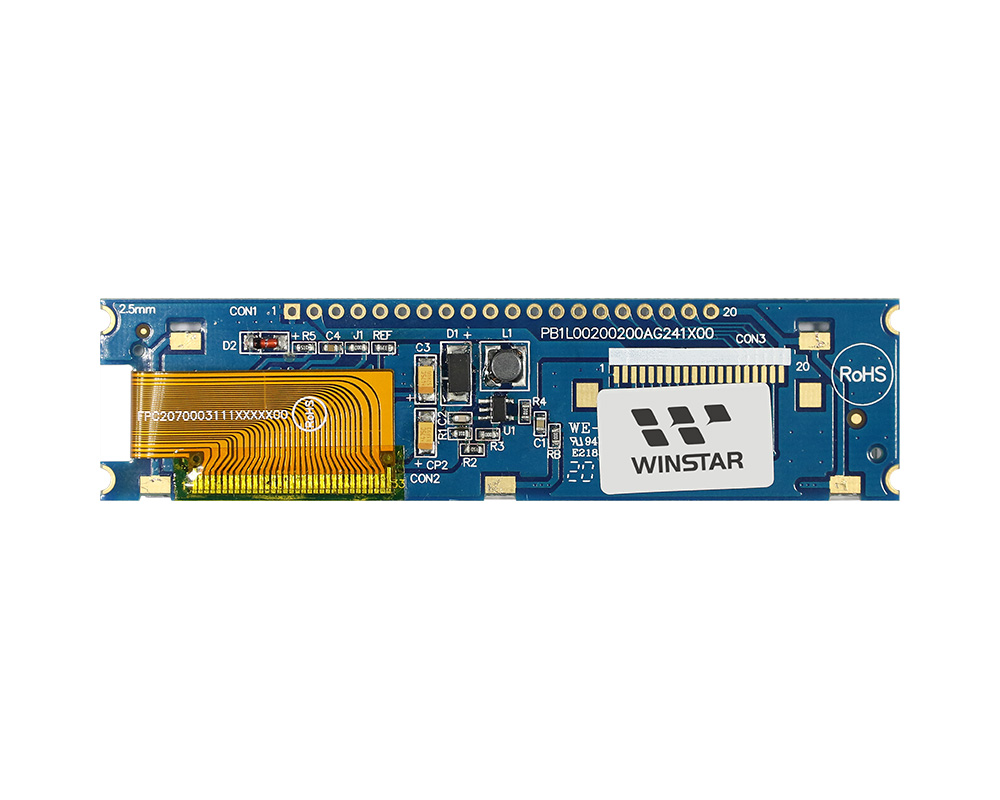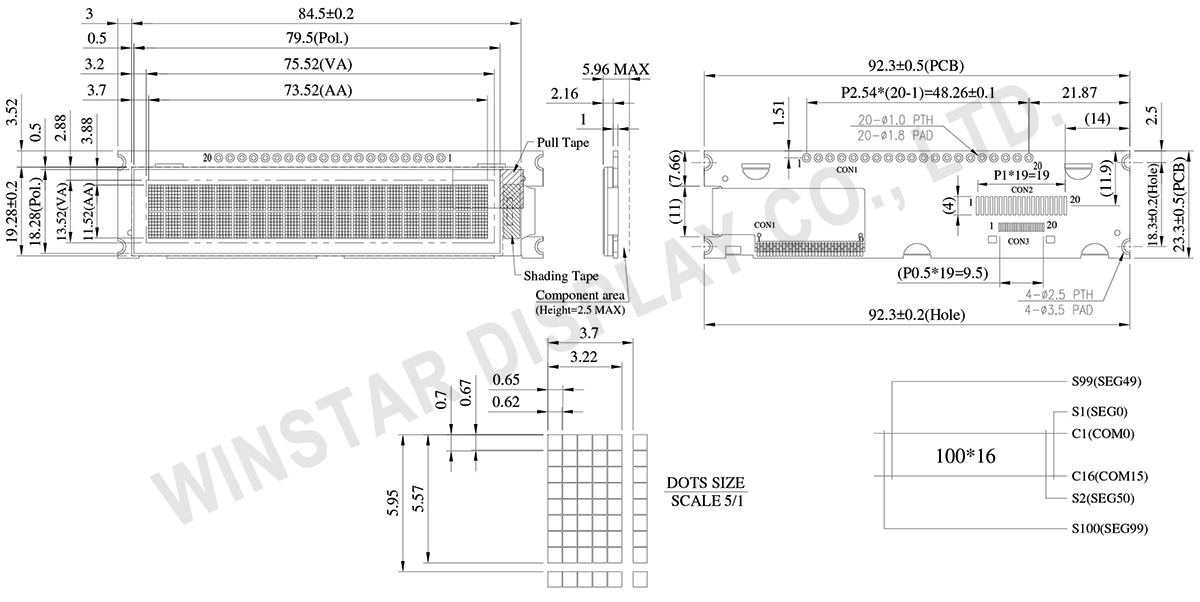Das Modell WEA002002A ist ein 2,93 Zoll COG OLED-Anzeigemodul mit einer integrierten PCB. Es bietet ein Display im Format 2x20 Zeichen und kommt mit einer PCB, die vier Befestigungslöcher enthält, um die Installation in verschiedenen Anwendungen zu erleichtern. Die Abmessungen des Moduls betragen 92,3 x 23,3 mm bei einer Dicke von 5,96 mm. Der aktive Bereich misst 73,52 x 11,52 mm.
Das Modul ist mit einem SSD1311 IC ausgestattet und unterstützt die Schnittstellen 6800/8080 4-Bit/8-Bit parallel, I2C und 4-Draht SPI. Es enthält ROMs für ASCII, englische, europäische und japanische Zeichen. Die Standard-Betriebsspannung für die Logik beträgt 3,3 V, optional sind auch 5 V verfügbar. Der Display-Stromverbrauch beträgt 50 mA bei 3,3 VDD (typischer Wert) mit einer 50%-Überprüfung des Board-Stroms und arbeitet mit einer Treiberpflicht von 1/16.
Das WEA002002A COG OLED-Anzeigemodul ist eine verbesserte Version des WEO002002A Modells und bietet zusätzlich eine PCB-Platine. Das PCB-Design des WEA002002A ist für Kabelverbindungen geeignet, was es den Kunden erleichtert, die PCB nicht selbst entwickeln zu müssen. Dieses Modul integriert die Schnittstelleneinstellungen und die VCC-Schaltung, was die Verwendung vereinfacht.
Dieses 2,93 Zoll große OLED-Modul eignet sich ideal für Anwendungen in Smart-Home-Systemen, medizinischen Geräten, intelligenten Steuerungen, industriellen Steuerungen und mehr. Das WEA002002A Modul kann bei Temperaturen von -40°C bis +80°C betrieben werden und bei Temperaturen von -40°C bis +85°C gelagert werden.






